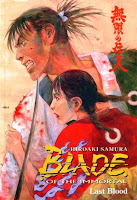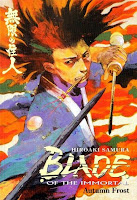 Author: Baku Yumemakura
Author: Baku Yumemakura
Illustrator: Jiro Taniguchi
U.S. publisher: Fanfare/Ponent Mon
ISBN: 9788496427877
Released: September 2009
Original release: 2000
Awards: Angoulême Prize, Japan Media Arts Award
The Summit of the Gods, Volume 1 is the first book in a five-volume manga series written by Baku Yumemakura and illustrated by Jiro Taniguchi. The series is based on Yumemakura’s award-winning novel The Summit of the Gods published in 1997. The manga adaptation of The Summit of the Gods is an award-winner in its own right, too. A nominee and finalist for numerous awards, The Summit of the Gods manga took home a Japan Media Arts Excellence Award in 2001 and an Angoulême Prize for Artwork in 2005. The Summit of the Gods, Volume 1 was first released in Japan in 2000. The English-language edition was published in 2009 Fanfare/Ponent Mon. The series has also been translated into French and German, among other languages. I first encountered Yumemakura and Taniguchi’s The Summit of the Gods during the Jiro Taniguchi Manga Moveable Feast. It easily became my favorite collaborative work by Taniguchi.
In 1924, George Mallory and Andrew Irvine climbed Mount Everest in an attempt to become the first men to stand on the mountain’s peak. The two men disappeared during the climb, never to return. Whether or not they reached the summit remains a mystery. Nearly seven decades later, Makoto Fukamachi, a Japanese photographer on another failed Everest expedition, discovers a camera in a shady back alley shop in Kathmandu matching the make and model of the one carried by Mallory on his final ascent. In his search for more information about the camera, Fukamachi encounters Jouji Habu, an aloof, legendary Japanese mountain climber who hasn’t been heard from in years. What started out as an interest in the camera evolves into an interest in Habu himself. Fukamachi feels compelled to learn all that he can about Habu, his reason for being in Nepal, and his connection to the camera. His search for answers leads him from Nepal back to Japan where he seeks out those who, for better or for worse, personally knew Habu.
The artwork in The Summit of the Gods is stunning, often bordering on photorealistic. I am not at all surprised that the series has won awards for Taniguchi’s art. Perhaps most striking is the depiction of the mountains themselves. Only small portions of them can ever be seen at any given time, but there is a sense that the mountains continue on far beyond the edges of the page. Taniguchi expertly captures the mountains’ massive presence in The Summit of the Gods. This is critical since they are such an important part of the story. The artwork’s realism also extends to the mountaineering gear and climbing equipment. Taniguchi pay s very close attention to accuracy and details. Every time the climbers attempt an ascent they are risking their lives. It’s difficult to forget this when Taniguchi shows that the only things keeping them “safe” are a rope and a handful of pitons. A single misstep or equipment failure could mean a climber’s death.
Much like Fukamachi, Habu absolutely fascinates me. He is by far the most developed character in The Summit of the Gods, Volume 1. This is understandable since he’s the subject of such an intense investigation. Habu is revealed to be an extremely passionate man and is frequently described as a climbing genius. It is that genius and seriousness that drives rifts between him and his fellow climbers. Socially, he is extremely brash and awkward. It is not until well into the first volume of The Summit of the Gods that a softer side of Habu is seen when Buntarou Kishi, a young climber who greatly admires Habu, is introduced. As unlikeable as Habu can be, I still find his story to be a compelling one. He keeps his distances and doesn’t express himself well, he’s blunt and insensitive, but he’s also honest and fervent. His characterization is exceptionally well done. I have now read The Summit of the Gods, Volume 1 several times and I still find it to be a tremendous and breathtaking work.




